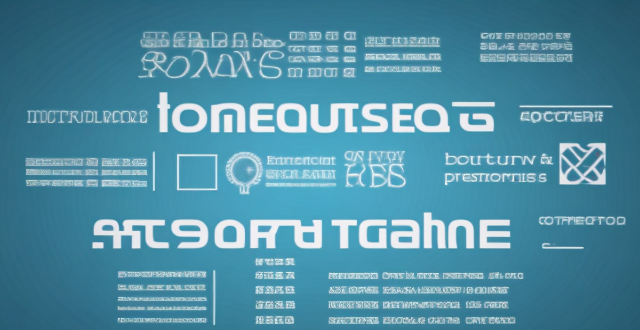Progress Agreement

What is the Paris Agreement and how does it contribute to global climate governance ?
The Paris Agreement, adopted in 2015, is a landmark global climate change agreement aimed at limiting global warming to below 2°C and pursuing efforts to limit it to 1.5°C above pre-industrial levels. It contributes significantly to global climate governance by establishing mechanisms such as Nationally Determined Contributions (NDCs), enhancing transparency and accountability, providing finance and capacity building, addressing loss and damage, conducting global stocktakes, and setting long-term goals. These measures help track progress, hold countries accountable for their commitments, support vulnerable nations, assess collective progress, and encourage more aggressive action towards mitigating climate change.

What are the main objectives of the Paris Climate Agreement ?
The Paris Climate Agreement, adopted in 2015, is a global response to climate change with the main objectives of limiting global warming to below 2°C and pursuing efforts to limit it further to 1.5°C. Additionally, the agreement focuses on enhancing adaptive capacity, resilience, and reducing emissions, implementing nationally determined contributions (NDCs), providing finance and technology support to developing countries, and promoting transparency and regular assessments.

How effective has the Paris Climate Agreement been in reducing carbon emissions ?
The Paris Climate Agreement, adopted in 2015, aims to limit global warming. It has seen near-universal participation and relies on voluntary emission reduction pledges by countries. However, challenges include a lack of enforcement, insufficient ambition in targets, and uneven progress. Global emissions continue to rise, and greenhouse gas concentrations are reaching new highs. The agreement's effectiveness is limited, requiring stronger commitments for significant and lasting emission reductions.

What are the key provisions of the Paris Agreement on climate change ?
The Paris Agreement on Climate Change is a global response to climate change adopted in 2015. Key provisions include limiting global warming below 2 degrees Celsius, pursuing efforts toward 1.5 degrees, nationally determined contributions, transparency and accountability measures, financial support for developing countries, addressing loss and damage from climate impacts, enhanced capacity building, and regular global stocktakes. The agreement stresses the importance of implementation and support, with developed countries taking the lead. Its success relies on international cooperation and continuous efforts to combat climate change.

How does the Paris Agreement influence national climate objectives ?
The Paris Agreement, a pivotal international treatThe Paris Agreement, a pivotal international treat15, has significantly shaped has significantly shaped national climate objectives by encouraging long-term goals, promoting global cooperation and transparency, and stimulating innovation and sustainable development. It urges countries to set emission reduction targets (NDCs), develop adaptation plans, and build resilience against climate change impacts. The agreement also fosters global stocktake, peer review, and capacity building initiatives. Furthermore, it promotes clean energy transitions, green finance, and sustainable business practices, integrating climate action into economic planning. Overall, the Paris Agreement serves as a framework for ambitious, voluntary climate efforts, driving policy alignment with urgent climate needs and enabling mutual support.

How does the Paris Climate Agreement aim to reduce global warming ?
The Paris Climate Agreement, adopted in 2015, is a global pact with the primary objective of limiting global warming to below 2°C and pursuing efforts to limit it further to 1.5°C above pre-industrial levels. This summary explores key aspects of the agreement: 1. **Long-term Temperature Goals** emphasize holding the increase in global average temperature well below 2°C and pursuing efforts for 1.5°C. 2. **Nationally Determined Contributions (NDCs)** require each country to set voluntary targets on greenhouse gas emissions and climate change plans. 3. **Enhanced Transparency and Accountability** introduce a system for monitoring compliance through regular reporting. 4. **Finance and Capacity Building** involve developed countries providing financial assistance and capacity building to developing nations. 5. **Loss and Damage** address inevitable impacts of climate change by creating a mechanism for dealing with associated losses. 6. **Global Stocktake** is a periodic review process to assess global progress toward meeting the agreement's goals. 7. **Cooperation and Implementation** highlight the importance of international collaboration for effective implementation of the agreement. These components work together to create a comprehensive approach aimed at mitigating the effects of climate change and adapting to its impacts.

How do international agreements such as the Paris Agreement promote climate action ?
The Paris Agreement is a global climate agreement that aims to limit global warming to well below 2 degrees Celsius above pre-industrial levels and pursue efforts to limit the temperature increase to 1.5 degrees Celsius, adopted by 196 parties at COP 21 in Paris on 12 December 2015 and entered into force on 4 November 2016, representing a significant step forward in global efforts to address climate change, promoting climate action by setting clear goals, requiring nationally determined contributions, establishing transparency and accountability mechanisms, providing financial and technical support to developing countries, and facilitating global cooperation through the global stocktake and other means.

What is the Paris Agreement and how does it impact climate policies worldwide ?
The Paris Agreement is a global climate change agreement adopted by 196 parties at the United Nations Framework Convention on Climate Change (UNFCCC) Conference of the Parties (COP) in Paris on December 12, 2015. The main goal of the Paris Agreement is to limit global warming to well below 2 degrees Celsius above pre-industrial levels and pursue efforts to limit the temperature increase to 1.5 degrees Celsius. The Paris Agreement impacts climate policies worldwide by promoting global cooperation among nations to address climate change, requiring each country to submit a nationally determined contribution (NDC) outlining its own targets for reducing greenhouse gas emissions and adapting to the impacts of climate change, including a robust transparency framework to ensure that countries are meeting their commitments, committing developed countries to providing financial and technical support to developing countries, establishing a mechanism to address loss and damage associated with the adverse effects of climate change, and encouraging implementation and compliance through peer review and multilateral assessments.

What is the Paris Agreement and how does it address climate change ?
The Paris Agreement is a global climate change agreement adopted by 196 parties at the United Nations Framework Convention on Climate Change (UNFCCC) Conference of the Parties (COP 21) in Paris, France, on December 12, 2015. It aims to limit global warming to well below 2 degrees Celsius above pre-industrial levels and pursue efforts to limit the temperature increase to 1.5 degrees Celsius. The agreement also seeks to strengthen the ability of countries to deal with the impacts of climate change. To achieve its goals, the Paris Agreement addresses climate change through mitigation, adaptation, finance, and transparency and accountability measures. Mitigation refers to actions taken to reduce or avoid greenhouse gas emissions, such as increasing renewable energy use, improving energy efficiency, preserving forests, and implementing carbon pricing policies. Adaptation involves adjustments in natural or human systems in response to actual or expected climate stimuli or their effects, such as infrastructure development, water management, health systems, and agriculture practices. Finance acknowledges the need for financial support from developed countries to help developing countries implement their climate actions through mechanisms like the Green Climate Fund and international cooperation. Transparency and accountability are ensured through regular reporting on national determined contributions (NDCs), a global stocktake process every five years, and an expert review process to assess the quality and accuracy of countries' reports on their greenhouse gas emissions and implementation of their NDCs.

How effective have international agreements, like the Paris Agreement, been in addressing global warming ?
The Paris Agreement, adopted in 2015, is a global climate accord aimed at limiting global warming to well below 2°C, ideally to 1.5°C, above pre-industrial levels. Key features include long-term goals for balancing emissions with removals by sinks, nationally determined contributions (NDCs) for emission reductions and adaptation efforts, transparency in reporting, financial support for developing nations, and mechanisms for addressing loss and damage due to climate change impacts. The agreement has been praised for its ambitious targets, widespread participation, flexibility, and promotion of international cooperation but faces challenges such as lack of enforcement, insufficient ambition in NDCs, reliance on political will, and equity concerns. Despite these challenges, progress has been made in areas like renewable energy growth, clean technology innovation, and green finance. The overall effectiveness of the Paris Agreement hinges on the commitment and actions of its signatories, requiring enhanced cooperation and sustained effort to achieve its goals.

How does the Paris Climate Agreement differ from the Kyoto Protocol ?
The Paris Climate Agreement and the Kyoto Protocol are both aimed at reducing greenhouse gas emissions to combat climate change, but differ in scope, emission reduction targets, flexibility, financial support, and long-term goals. The Paris Agreement is more comprehensive, including all countries, offering greater flexibility, setting a clear long-term goal, and emphasizing financial support for developing nations.

What is the Paris Agreement and how has it impacted international climate change negotiations ?
The Paris Agreement, adopted in 2015, is a significant milestone in the global fight against climate change. It has achieved near-universal participation with 196 parties signing onto the agreement, demonstrating a strong consensus on the need to address this issue. The agreement sets long-term goals to limit global warming and strengthen countries' ability to deal with its impacts. Key aspects of the Paris Agreement's impact on international climate negotiations include: 1. **Universal Participation**: Achieving near-universal participation, highlighting a global consensus on tackling climate change. 2. **Long-term Goals**: Setting clear long-term goals, providing direction for countries' policies. 3. **Nationally Determined Contributions (NDCs)**: Allowing countries to set their own targets based on capabilities while contributing to the overall goal. 4. **Regular Updates and Review Mechanism**: Ensuring continuous progress by requiring countries to regularly update and review their commitments. 5. **Loss and Damage**: Recognizing the need for financial resources to help developing countries cope with climate-induced loss and damage. 6. **Transparency and Accountability**: Building trust through regular reporting on emissions, implementation efforts, and support. 7. **Enhanced Cooperation and Support**: Emphasizing cooperation and support between developed and developing nations. 8. **Flexibility and Differentiation**: Recognizing differing responsibilities and capabilities, ensuring broad participation. Overall, the Paris Agreement has significantly impacted international climate change negotiations by setting clear goals, promoting universal participation, fostering cooperation, and establishing mechanisms for transparency and accountability.

How effective are international agreements like the Paris Agreement in addressing climate change ?
The Paris Agreement, adopted in 2015, is a significant international accord aimed at addressing climate change by limiting global warming. It has several positive aspects such as creating political momentum, raising public awareness, encouraging technological innovations, and promoting green finance. However, it also faces challenges like ambiguous targets, lack of enforcement, insufficient funding, equity concerns, and conflicts with economic interests. The effectiveness of the agreement depends on the commitment and action of its signatories, cooperation among nations, strength of Nationally Determined Contributions (NDCs), and follow-through on financial and technical support.

How does the Paris Climate Agreement address climate justice ?
The Paris Climate Agreement, adopted in 2015, emphasizes climate justice and the need for all countries to take action to limit global warming. It recognizes the unequal impacts of climate change on vulnerable communities and developing countries, and provides mechanisms for financial support, capacity building, and loss and damage compensation. The agreement aims to create a more equitable and just response to the global challenge of climate change.

What is the Paris Agreement and its impact on climate governance ?
The Paris Agreement, adopted in 2015, aims to limit global warming and represents a unified effort by countries worldwide to address climate change. Key features include long-term goals, nationally determined contributions (NDCs), adaptation measures, loss and damage mechanisms, financial support, and transparency frameworks. The agreement has impacted climate governance by promoting global cooperation, enhancing political commitment, providing flexibility in NDCs, establishing financial mechanisms, ensuring transparency, recognizing loss and damage, integrating policies, involving the private sector, and raising public awareness. Despite implementation challenges, the Paris Agreement has set the stage for concerted action on climate change.

How has climate action evolved over the past decade, and what progress has been made ?
Over the past decade, significant strides have been made in the realm of climate action. This evolution is characterized by increased awareness, global mobilization, technological advancements, and policy changes aimed at mitigating the effects of climate change. Key aspects of this progress include: 1. **Increased Awareness and Global Mobilization**: Public awareness about climate change has grown substantially, thanks to educational initiatives, media campaigns, youth-led movements like Fridays for Future, and UNFCCC COP conferences. 2. **Technological Advancements**: Remarkable progress in renewable energy technologies, electric vehicles, energy efficiency, and carbon capture has been made. 3. **Policy Changes and Legal Frameworks**: Many countries have implemented policies to reduce greenhouse gas emissions and promote clean energy. The Paris Agreement set a global framework for combating climate change. 4. **Financial Investments and Market Mechanisms**: Green finance, carbon pricing, and investment in sustainable infrastructure are on the rise. 5. **Corporate Responsibility and Innovation**: Corporations are setting sustainability goals, managing their supply chains more sustainably, and consumers are choosing environmentally responsible products. 6. **Civil Society and Community Action**: Grassroots organizations lead community-based actions, local communities establish renewable projects, and NGOs advocate for stronger climate policies. 7. **Research and Collaboration**: Ongoing scientific research, international platforms, and open data initiatives foster collaboration and better understanding of climate solutions. 8. **Challenges and Setbacks**: Despite advancements, challenges remain, including political will, economic barriers, inequity, and loss and damage from climate change. In conclusion, while notable progress has been made in climate action over the past decade, continued efforts across all sectors will be required to meet ambitious goals and limit climate change impacts.

What is the Paris Agreement on Climate Change and how has it impacted international relations ?
The Paris Agreement on Climate Change is a global agreement aimed at reducing greenhouse gas emissions and limiting the increase in global temperatures to well below 2 degrees Celsius above pre-industrial levels. It has led to increased cooperation among nations, put pressure on non-compliant countries, and had economic and political implications for countries around the world.

Which countries have ratified the Paris Climate Agreement ?
The Paris Climate Agreement is a global pact to tackle climate change. Since its adoption in 2015, numerous countries around the world have ratified this agreement. The United States initially ratified the Paris Agreement but later announced its withdrawal on June 1, 2017. China has pledged to reach peak CO2 emissions by 2030 and increase the share of non-fossil fuels in its energy consumption to around 20% by the same year. The EU and its member states aim to reduce greenhouse gas emissions at least 40% below 1990 levels by 2030. India aims to achieve about 40% cumulative electric power installed capacity from non-fossil fuel based energy resources by 2030. Brazil has committed to reducing greenhouse gas emissions by 37% by 2025 and by 43% by 2030, both in relation to 2005 levels. Like the US, Canada also withdrew from the Paris Agreement on November 4, 2019.

How do you measure progress in students with special education needs ?
Measuring progress in students with special education needs (SEN) is crucial for understanding the effectiveness of interventions and ensuring appropriate education. Identify goals through Individualized Education Plans and focus on functional skills. Use formative assessments, standardized testing, and alternative assessments to monitor progress. Implement progress monitoring tools and analyze data to inform instructional decisions. Ensure accommodations and modifications are effective and regularly updated. Maintain open communication with parents and collaborate with a team to support the student's development.

What role do developing countries play in the Paris Climate Agreement ?
The Paris Climate Agreement, adopted in 2015, is a global response to the urgent need for action on climate change. It represents a significant step forward in international efforts to mitigate the effects of climate change and adapt to its impacts. Developing countries play a crucial role in this agreement, as they are disproportionately affected by climate change and have unique challenges and opportunities in addressing it. Key Points: - Many developing countries are located in regions that are particularly vulnerable to the impacts of climate change, making their participation essential for building resilience and adaptive capacity. - Developing countries have significant potential for mitigating greenhouse gas emissions through sustainable development pathways, renewable energy deployment, and forestry activities, which are vital for achieving the long-term temperature goals set out in the agreement. - The Paris Agreement recognizes the need for developed countries to provide financial and technological support to help developing countries implement their climate actions, which is crucial for enabling these countries to build low-carbon, climate-resilient economies. - Under the Paris Agreement, each country submits National Determined Contributions (NDCs), which outline their planned contributions to mitigating climate change and adapting to its impacts. Developing countries have submitted a wide range of NDCs, reflecting their diverse circumstances and priorities. - The Paris Agreement acknowledges the need to address loss and damage associated with the impacts of climate change in developing countries, particularly in vulnerable communities. This includes both slow-onset changes and sudden-onset events, such as floods and droughts. - The agreement emphasizes the importance of capacity building for developing countries to enhance their ability to implement climate actions effectively, including improving institutional arrangements, strengthening technical expertise, and fostering knowledge sharing. In conclusion, developing countries are integral participants in the Paris Climate Agreement, bringing unique perspectives, challenges, and opportunities to the global effort to combat climate change. Their active engagement is critical for achieving the goals of the agreement and ensuring a more equitable and sustainable future for all.

How can we measure progress towards achieving the Sustainable Development Goals ?
The text discusses the importance of measuring progress towards achieving the Sustainable Development Goals (SDGs) set by the United Nations in 2015. It outlines seven key steps to effectively monitor and evaluate this progress: establishing baseline data, tracking specific indicators, reporting and reviewing progress, utilizing technology, engaging stakeholders, addressing data gaps, and ensuring transparency and accountability. Each step includes a detailed explanation of methods and strategies to implement it successfully. The goal is to provide a structured approach for countries and organizations to assess their performance in meeting the ambitious objectives aimed at tackling global challenges such as poverty, inequality, and environmental degradation.

What are the potential economic impacts of implementing the Paris Climate Agreement ?
Implementing the Paris Climate Agreement could have various economic impacts, including stimulating innovation and job creation in renewable energy sectors, reducing fossil fuel dependency, improving public health, and promoting green growth. However, there may also be short-term costs of transition, impacts on traditional industries, adjustment for businesses, and global economic imbalances. To mitigate negative impacts, governments and organizations can provide support for workers transitioning to new industries, implement carbon pricing mechanisms, engage in public-private partnerships, and cooperate internationally. Overall, the long-term benefits of avoiding catastrophic climate change outweigh the short-term economic costs, making the agreement a crucial step toward a sustainable future.

What is the current status of international efforts to reduce greenhouse gas emissions ?
This article discusses the current status of international efforts to reduce greenhouse gas emissions, including the Paris Agreement, national commitments, and the role of non-state actors. It highlights the challenges and opportunities in achieving the goals set out in the Paris Agreement and emphasizes the need for greater financial support for developing countries to implement their climate actions.

How does climate finance contribute to the implementation of the Paris Agreement goals ?
Climate finance is a critical enabler for countries to meet their Paris Agreement commitments. It encompasses public and private investments, grants, and other financial instruments aimed at supporting low-carbon development and adaptation measures. Key components include public funds, private sector investments, multilateral and bilateral funding, and carbon markets. Climate finance supports the Paris Agreement goals by funding renewable energy projects, energy efficiency initiatives, research and development, forest conservation, infrastructure resilience, agricultural practices, health systems, technical assistance, capacity building, and education and awareness programs. While challenges exist in ensuring adequate funding levels and equitable distribution of resources, opportunities lie in innovative financing mechanisms, private sector engagement, and technology utilization for transparency and effectiveness.

How do I measure progress in my sports training plan ?
Measuring progress is crucial for athletes to track development and adjust their training plans. Set SMART goals, track performance, evaluate technique, monitor body composition, assess fitness level, and reflect on mental state to measure progress effectively.

What methods can be used to assess a child's progress in homeschooling ?
In recent years, homeschooling has become a popular option for parents who prefer to educate their children at home. However, assessing a child's progress in homeschooling can be challenging for both parents and educators. In this article, we will discuss some methods that can be used to evaluate a child's academic and personal growth in a homeschooling environment. Regular testing and evaluations are one of the most effective ways to assess a child's progress in homeschooling. This can include standardized tests, such as the Iowa Test of Basic Skills or the Stanford Achievement Test, which measure a child's knowledge and skills in various subject areas. Additionally, parents can create their own tests and quizzes based on the curriculum they are using. Another method for evaluating a child's progress in homeschooling is through portfolio assessment. This involves collecting samples of a child's work over time, such as writing assignments, science projects, art pieces, and other creative endeavors. By reviewing these samples, parents and educators can gain insight into a child's strengths, weaknesses, and overall development. Observing a child's daily activities and keeping a record of their progress through journaling can also be an effective way to assess their development in homeschooling. Parents can observe their child's behavior during lessons, note any challenges or successes, and track their progress over time. Finally, receiving feedback from others can provide valuable insights into a child's progress in homeschooling. This can include feedback from tutors, online teachers, or even family members who have observed the child's learning process. By gathering input from multiple sources, parents can gain a more comprehensive understanding of their child's academic and personal growth. In conclusion, assessing a child's progress in homeschooling requires a combination of methods, including regular testing and evaluations, portfolio assessment, observations and journaling, and feedback from others. By utilizing these strategies, parents and educators can gain a better understanding of a child's academic and personal growth and make informed decisions about their educational journey.

How do international climate agreements influence national climate policy assessments ?
International climate agreements influence national climate policy assessments by setting global goals and targets, providing guidance on best practices, facilitating technology transfer and cooperation, enhancing transparency and accountability, and offering financial support for climate action. Examples of such agreements include the UNFCCC, Kyoto Protocol, and Paris Agreement.

How can I track my progress if I'm only exercising at home ?
**Tracking Progress in Home Exercises** When working out at home, monitoring your progress helps you stay motivated and makes adjustments to your routine. Here are key strategies: 1. **Set Clear Goals:** Divide goals into short-term (e.g., increasing push-ups) and long-term (e.g., weight loss). Ensure they're specific and achievable. 2. **Keep a Workout Journal:** Record details of each session, reflect on what works, and make necessary changes. 3. **Use Technology:** Fitness apps and smart devices can track metrics like steps and heart rate. 4. **Take Measurements:** Regularly measure weight, body fat, and performance metrics to see physical changes. 5. **Evaluate Intensity and Recovery:** Use RPE to assess workout difficulty and monitor recovery times after exercise. 6. **Compare Against Baseline:** Regularly reassess initial measurements and performances to gauge improvement. 7. **Utilize Visual Cues:** Photos and mirror checks can show changes in your physique over time. 8. **Engage in Strength Training:** Track the weight lifted and rep maxes to indicate strength gains. 9. **Focus on Feel and Function:** Pay attention to how your body feels during workouts and improve the quality of movement. By employing these methods, you can effectively track your progress while exercising at home, ensuring consistent improvements and maintaining motivation.

How much time should I dedicate daily to achieve rapid progress in a foreign language ?
To achieve rapid progress in a foreign language, itTo achieve rapid progress in a foreign language, iticate a significant amount of time it is crucial to dedicate a significant amount of time daily to practice and study, including both active and passive learning activities. Establishing a daily study routine, setting realistic goals, and maintaining consistency are key strategies for success.